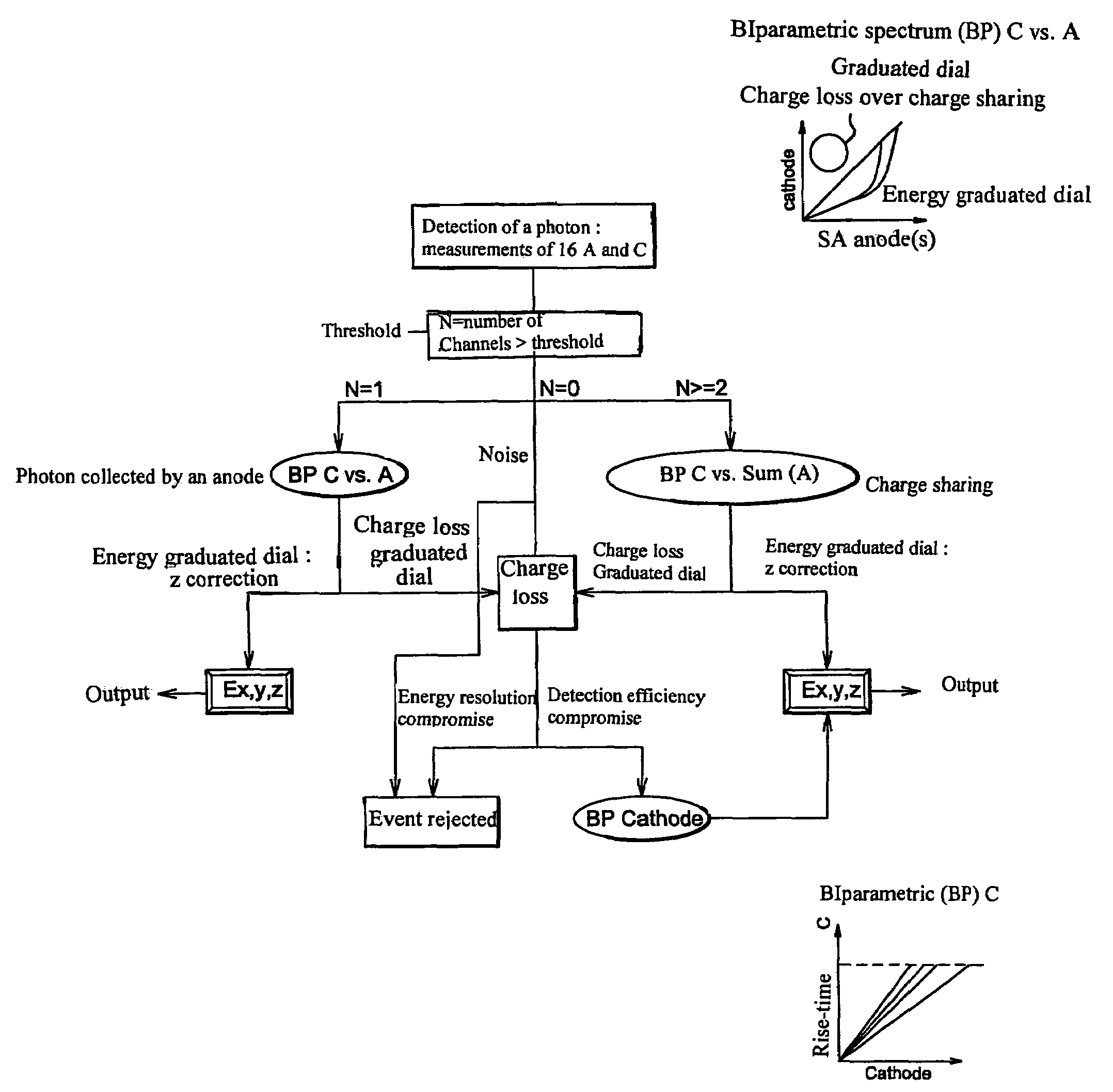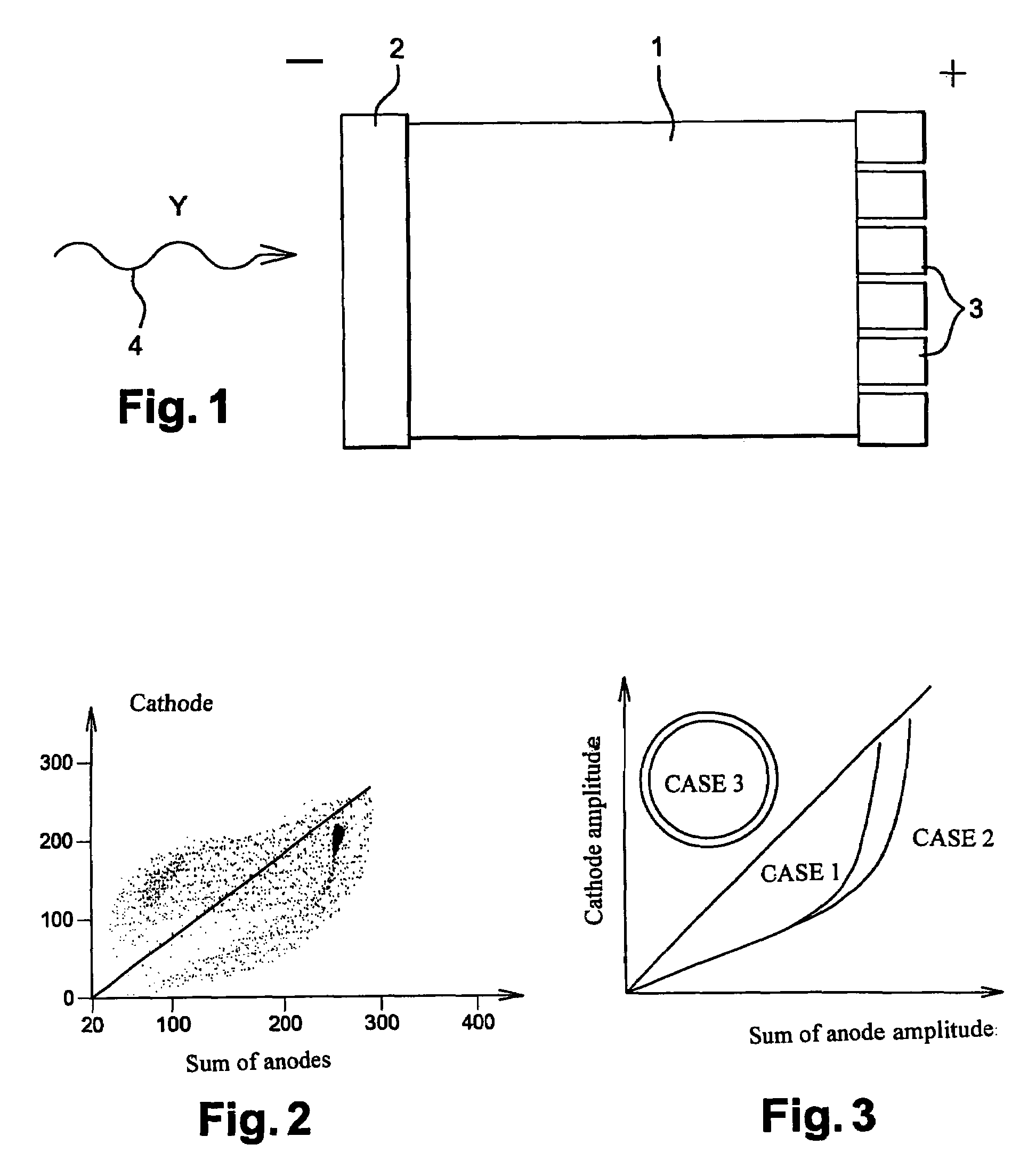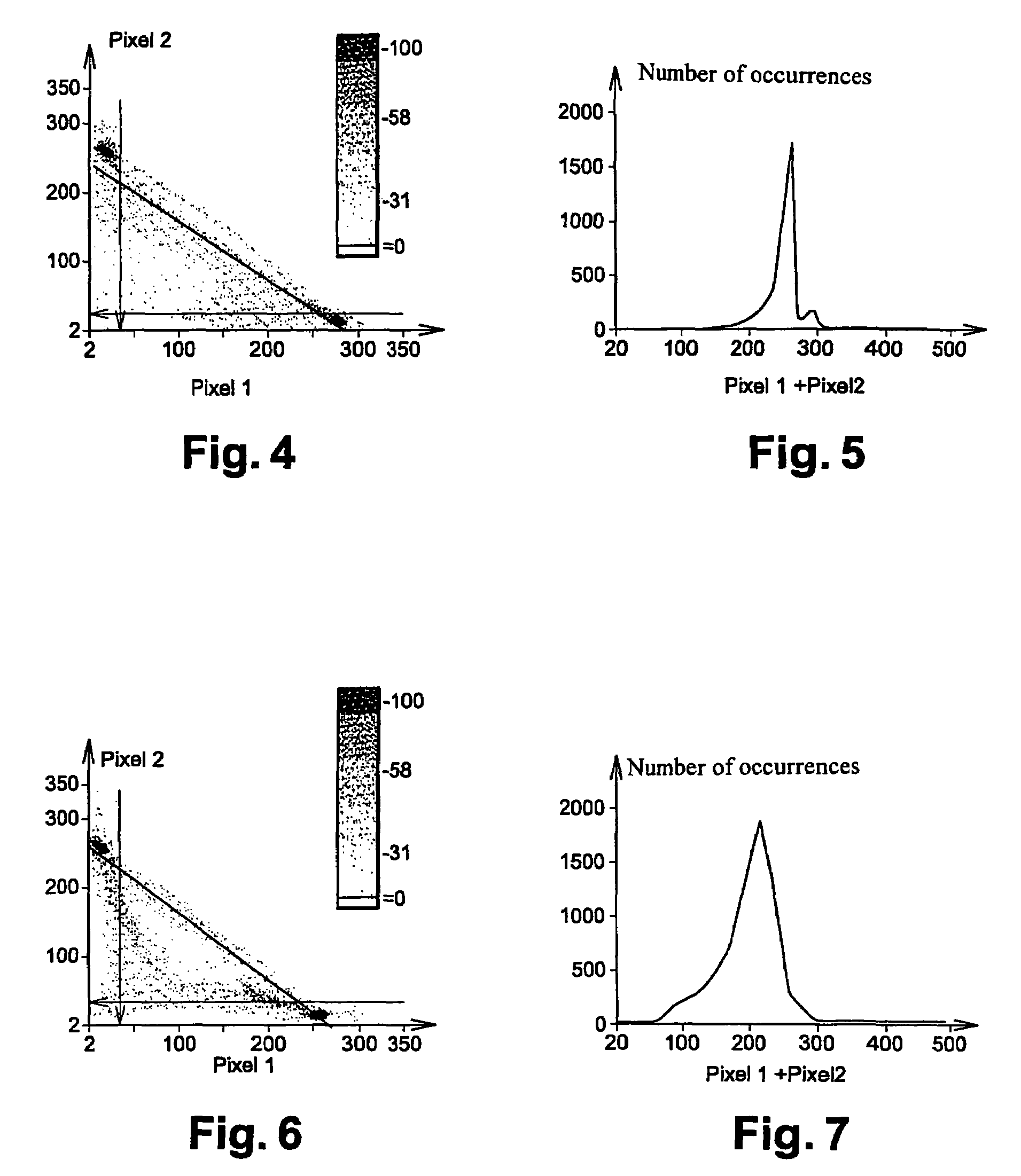Method for optimizing the performance of a semiconductor detector
a technology of semiconductor detectors and optimization methods, which is applied in the field of x-rays and -rays, can solve the problems of native flaws that cannot be avoided, the use of semiconductor materials poses a technical problem, and the hole is difficult to reach the electrodes and, especially, the cathode, so as to facilitate the optimization of the spatial resolution of such a detector
- Summary
- Abstract
- Description
- Claims
- Application Information
AI Technical Summary
Benefits of technology
Problems solved by technology
Method used
Image
Examples
Embodiment Construction
[0071]A semiconductor detector as implemented by the present invention is described very succinctly, reference being made to FIG. 1. It comprises a solid semiconductor 1 produced, for example, by crystal growth, made of CdZnTe or CdTe for instance. These materials are currently well known for their ability to convert the energy resulting from an X or γ photon 4 into an electron / hole charge pair.
[0072]Electrodes, a cathode 2 and anode 3 respectively, are separately mounted on the two main opposite surfaces of semiconductor 1. One then applies a bias voltage to the semiconductor making it possible to ensure migration of the charges generated following interaction between photon 4 and semiconductor 1.
[0073]In addition, on each of the electrodes, one measures a signal, the amplitude of which directly correlates to the quantity of charges thus generated.
[0074]Anode 3 is pixelated, one of the objectives of the present dimension being to reduce the dimension of the pixels or the inter-pixe...
PUM
 Login to View More
Login to View More Abstract
Description
Claims
Application Information
 Login to View More
Login to View More - R&D
- Intellectual Property
- Life Sciences
- Materials
- Tech Scout
- Unparalleled Data Quality
- Higher Quality Content
- 60% Fewer Hallucinations
Browse by: Latest US Patents, China's latest patents, Technical Efficacy Thesaurus, Application Domain, Technology Topic, Popular Technical Reports.
© 2025 PatSnap. All rights reserved.Legal|Privacy policy|Modern Slavery Act Transparency Statement|Sitemap|About US| Contact US: help@patsnap.com



